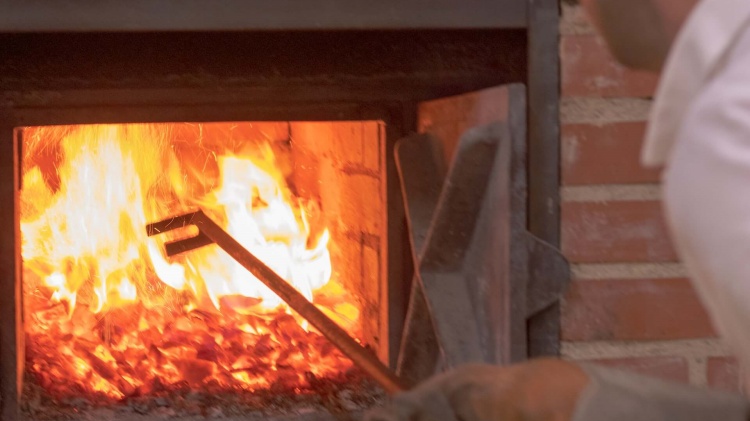
Which Type Of Materials Can You Use To DIY Your Travel Kettle?
Every travel kettle is a potential canvas waiting to be transformed into a piece that not only brews your favorite drinks but also showcases your

When it comes to heating things in modern appliances and industrial processes, heating element alloys play a crucial role. These specially formulated metal composites allow us to precisely control high temperatures, ensuring efficient and safe heat transfer.
In this comprehensive guide, we’ll explore the composition, functionality, advantages and applications of various heating element alloys. From traditional metal wires to advanced polymer positives, understanding the properties of these materials is key to mastering heat across industries.

While pure metals can be used for some basic heating applications, alloys (mixtures of metals or metals and other elements) allow engineers much more flexibility. Alloys can be designed to melt at specific temperatures, resist corrosion or oxidation, and withstand repeated heating and cooling cycles over long periods. This tailoring of material properties is what makes advanced heating elements possible for even the most demanding uses.
There are three main categories of heating elements commonly used today:
The most traditional option, metal heating elements use alloy wires or strips to generate heat through resistance. They are simple, inexpensive to produce, and easy to repair or replace when needed. However, they can be limited to maximum safe operating temperature.
Composite heating elements combine a base metal alloy with other compounds like ceramics or carbon to achieve improved durability and efficiency. This allows them to safely reach much higher temperatures than metal elements alone.
Some state-of-the-art heating systems combine different technologies like metallic coils and ceramic plates. This allows engineers to optimize performance by leveraging the strengths of multiple elements in a custom configuration.
Metallic heating elements based on resistance wires and strips are the simplest and often the most cost-effective solution for small to medium heating applications. Some key traits:
Common alloys include:
While metals form the basic wiring of most heating elements, composites allow engineers to tailor elements for extreme conditions far beyond traditional capabilities. Some ways they accomplish this:
These composite heating elements can safely reach temperatures from 2000°F to over 3000°F in continuous operation, while lasting for years even in the most harsh and volatile environments. Their advanced materials and engineered construction provides consistent, efficient heat over an exceptionally long service life compared to conventional solutions.
These robust capabilities allow composites to meet specialized demands from leading aerospace, energy, and high-end industrial companies that metal wires alone cannot satisfy.

For state-of-the-art heating performance surpassing even advanced composites, some large-scale applications utilize custom combination systems with multiple integrated technologies:
These complex combined heating systems are engineered for the specialized environment and application demands of automated furnaces, aerospace component testing equipment, and large commercial/industrial production lines.
Now that we’ve surveyed the landscape of heating element designs and alloys, from simple resistance wires to complex composites, let’s take a more in-depth look at some of the most important modern options:
When we think of a traditional heating element, we likely picture the easily recognized glow of a coiled resistance wire inside an appliance. But how do these staples of household heating reliably operate for years on end?
By precisely tuning the metallic alloy composition and properties, these simple yet highly functional wire elements can reach temperatures up to 1400°F safely for most consumer and industrial demands. This makes them an ideal choice for the majority of small to medium heating applications worldwide.
Need to push past the limits of metallic resistance heaters and reach temperatures exceeding 3000°F? Ceramic and silicon carbide heating elements can handle over 3000°F!
Their exceptional thermal and electrical performance stems from the engineered non-metallic, porous structure:
These properties make ceramic and carbide-based elements ideal for the most extreme demands of high-power industrial heating zones, hypersonic aerospace scramjet engines, and high-throughput advanced manufacturing processes operating continuously at temperatures surpassing 2700°F!
For specialized applications where radiative heating methods fall short, and direct contact conduction heating of parts is necessary, flexible film heating elements offer unique capabilities:
From highly localized spot heating in electronics, to large-area uniform temperatures needed across entire industrial tank walls, thin film elements provide versatility and customization matching the most challenging demands that wired or ceramic heaters cannot satisfy.
For applications not requiring ultra-high temperatures but instead needing self-regulated, precision heating without complex external control systems, polymer positive temperature coefficient (PTC) elements are the solution.
Their specialized polymer composition exhibits an incredibly useful effect:
The intrinsic safety, simplicity of integration, and precision control of these elements make them ideal for heating pads, portable electronics, battery warmers, and robotic assemblies where temperature regulation is critical.

We’ve explored the key alloys, designs, and performance capabilities of modern heating element technologies, ranging from basic resistance wires to truly advanced composites.
Looking forward, further improvements will rely on computational modeling to optimize alloy compositions and element geometries to precisely match application demands. Software-based co-design of heating elements along with their end-use systems will enable major efficiency and longevity gains.
In addition, novel manufacturing methods like additive manufacturing (3D printing) will allow more complex and integrated element designs currently unfeasible with conventional fabrication approaches.
At the heart of all existing and emerging advances resides the foundational principle of matching element capabilities and intrinsic constraints with the often intense demands of real-world heating applications across industries. Cost, temperature requirements, mechanical risks, operating environments and service lifetime must all be balanced simultaneously to arrive at an optimal alloy solution.
As R&D continues advancing alloy knowledge and designers push boundaries with new configurations, engineers will have an ever-expanding palette of materials and design options to experiment with. This will drive innovation in industrial heating performance for decades to come.
So in your next heating element project, don’t default to the basics without thorough exploration of alloy and geometry alternatives – the difference between an average design and a revolutionary system breakthrough often comes down to heating element mastery!


Every travel kettle is a potential canvas waiting to be transformed into a piece that not only brews your favorite drinks but also showcases your

When you think of customizing your travel tea kettle, the idea of adding LED lights probably isn’t the first thing that comes to mind. However,

Every travel kettle enthusiast knows the pain of a lukewarm cup of tea or coffee. It’s like expecting a hug and getting a handshake. But

There’s something uniquely comforting about enjoying a hot cup of tea while on the road, but keeping your travel tea kettle warm and protected can

Every travel kettle is a potential canvas waiting to be transformed into a piece that not only brews your favorite drinks but also showcases your

When you think of customizing your travel tea kettle, the idea of adding LED lights probably isn’t the first thing that comes to mind. However,

Every travel kettle enthusiast knows the pain of a lukewarm cup of tea or coffee. It’s like expecting a hug and getting a handshake. But

There’s something uniquely comforting about enjoying a hot cup of tea while on the road, but keeping your travel tea kettle warm and protected can
Copyright © 2024 brewgotravelkettle. All Rights Reserved.